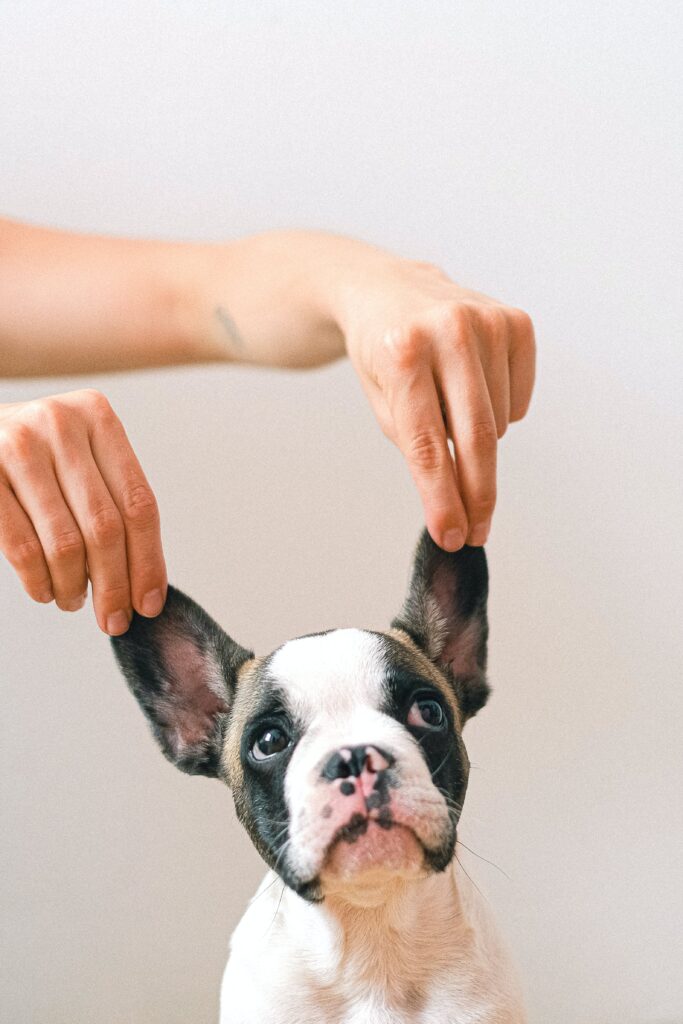Maintaining a healthy weight is crucial for the overall well-being of your furry friend. Here are some effective tips to help your dog shed those extra pounds and stay fit.
1. Monitor their food intake
Properly monitoring your dog’s food intake is essential for their health and well-being. By ensuring they are receiving the right amount of nutritious food, you can help prevent obesity and related health issues.
Measure their meals to avoid overfeeding
Feeding your dog the correct portion size is crucial. Overfeeding can contribute to weight gain and can lead to various health problems such as diabetes, joint issues, and heart disease. To avoid overfeeding, it is important to measure their meals accurately.
You can use a measuring cup or a kitchen scale to ensure you are providing the right amount of food. The recommended portion size may vary based on your dog’s size, age, and activity level, so consult with your veterinarian to determine the appropriate amount.
Choose high-quality, low-calorie dog food
The quality of the food you choose for your dog plays a significant role in their overall health. Opt for high-quality dog food that is specifically formulated to meet their nutritional needs.
Look for dog food that contains high-quality protein sources, such as chicken, beef, or salmon, as well as whole grains, vegetables, and fruits. Avoid dog food that contains excessive fillers, by-products, or artificial additives.
Additionally, consider selecting a low-calorie dog food if your dog needs to lose weight or maintain a healthy weight. These types of food are formulated to provide all the necessary nutrients while keeping the calorie content in check.
Avoid giving table scraps or excessive treats
While it may be tempting to share your food with your furry friend, it is essential to avoid giving them table scraps. Many human foods, such as chocolate, onions, and grapes, can be toxic to dogs.
Feeding your dog table scraps can also lead to weight gain and unhealthy eating habits. It is important to establish boundaries and only provide them with their designated dog food.
If you want to give your dog treats as a reward or for training purposes, opt for healthy and low-calorie options. There are plenty of dog treats available in the market that are specifically formulated to be nutritious and tasty without adding unnecessary calories.
Remember, maintaining a balanced and controlled diet is crucial for your dog’s overall health and well-being. By monitoring their food intake, choosing the right dog food, and avoiding unnecessary treats and table scraps, you can help them maintain a healthy weight and prevent potential health issues.
2. Increase physical activity
Regular physical activity is important for keeping your dog healthy and happy. Not only does it help maintain a healthy weight, but it also provides mental stimulation and helps prevent behavior problems. Here are some ways you can increase your dog’s physical activity:
1. Take your dog for regular walks or runs
One of the easiest and most common ways to increase physical activity is by taking your dog for regular walks or runs. Not only does this provide exercise, but it also allows your dog to explore their surroundings and get some fresh air. It’s recommended to walk your dog at least once a day for 30 minutes to an hour, depending on their age, breed, and health condition.
2. Engage in interactive play sessions
Interactive play sessions are a great way to bond with your dog and provide them with mental and physical stimulation. You can play games like fetch, tug-of-war, or hide and seek. These activities not only keep your dog active but also help improve their coordination and problem-solving skills.
3. Consider agility training or swimming
Agility training and swimming are advanced forms of physical activity that can take your dog’s fitness to the next level. Agility training involves navigating through obstacle courses, which can help improve your dog’s agility, balance, and coordination. Swimming is a low-impact exercise that is gentle on your dog’s joints while still providing a full-body workout.
No matter which activities you choose, it’s important to start slowly and gradually increase the intensity and duration. Always consider your dog’s age, breed, and overall health when designing an exercise routine. Also, don’t forget to consult with your veterinarian before starting any new activities, especially if your dog has any existing health conditions.
In conclusion, increasing your dog’s physical activity is vital for their overall well-being. It not only helps keep them physically fit but also provides mental stimulation and prevents behavior problems. So, make sure to take your dog for regular walks or runs, engage in interactive play sessions, and consider more advanced activities like agility training or swimming. Your dog will thank you for it!
3. Provide Mental Stimulation
Dogs are intelligent creatures who thrive when they are mentally stimulated. Boredom can lead to destructive behavior and can also affect their overall well-being. Therefore, it is essential to provide mental stimulation for your furry friend. Here are a few ways you can ensure your dog stays mentally engaged and entertained:
Use Puzzle Toys or Treat-Dispensing Toys
Puzzle toys and treat-dispensing toys are excellent tools to challenge your dog’s mind while keeping them entertained. These toys are designed to make your dog work for their food or treats. By solving puzzles or manipulating the toy in various ways, your dog can earn their reward. Not only do these toys provide a mental challenge, but they also prevent your dog from gulping down their food too quickly, which can lead to digestive issues.
There are different types of puzzle toys available, such as ones that require your dog to move pieces or ones that require them to solve a sequence of actions. Begin with simpler puzzles and gradually increase the difficulty level as your dog becomes more proficient. This will keep them engaged and prevent them from becoming frustrated.
Teach New Tricks or Obedience Commands
Teaching your dog new tricks or obedience commands is a great way to stimulate their mind and strengthen your bond. Dogs love to learn and please their owners, so training sessions can be both engaging and rewarding for them. Start with basic commands like sit, stay, and come, and gradually progress to more advanced tricks.
Training sessions should be fun and positive. Use rewards such as treats, praise, and playtime to motivate your dog. Break the training sessions into short, frequent sessions to keep your dog’s attention span intact. Remember to be patient and consistent, as dogs learn at their own pace.
Arrange Playdates with Other Dogs for Socialization
Socialization is an essential aspect of a dog’s mental well-being. Dogs are social animals and enjoy interacting with their counterparts. Organizing playdates with other dogs allows your furry friend to exercise their social skills, learn from other dogs, and expend their energy in a healthy way.
When arranging playdates, ensure that the other dogs are friendly and compatible with your dog’s temperament. Choose a safe and secure location where the dogs can play off-leash and have enough space to roam and explore. Observe the interactions between the dogs, intervene if necessary, and provide them with breaks to avoid overstimulation.
Remember, mental stimulation is just as important as physical exercise for your dog’s overall well-being. Incorporate puzzle toys, training sessions, and playdates into their routine to keep their minds active and engaged. By providing them with the mental stimulation they need, you can have a happy and fulfilled furry companion.
4. Regular veterinary check-ups
Regular veterinary check-ups are essential for ensuring the overall health and well-being of your pets. Just like humans, pets require regular medical attention to monitor their health, detect any underlying conditions, and provide appropriate treatment or interventions.
Consult with your vet for a weight loss plan
If your pet is overweight or obese, it is important to consult with your veterinarian to develop a suitable weight loss plan. Excess weight can lead to various health problems such as cardiovascular issues, joint pain, and diabetes. Your vet can assess your pet’s current weight, determine the ideal weight, and recommend a diet and exercise routine to help shed those extra pounds.
A weight loss plan typically involves controlling the portion sizes of your pet’s meals, choosing a balanced and nutritious diet, and increasing physical activity. Your vet may also suggest specific weight loss pet foods that are formulated to promote weight reduction while providing essential nutrients to support overall health.
Monitor any underlying health conditions
Regular veterinary check-ups are crucial for monitoring any underlying health conditions that your pet may have. Some health issues may not be immediately noticeable, but regular check-ups allow for early detection and intervention.
Your vet will conduct a thorough examination, which may include taking your pet’s vital signs, checking their teeth and gums, listening to their heart and lungs, and assessing their overall body condition. They may also conduct additional tests such as blood work, urine analysis, or X-rays to screen for any underlying health conditions.
By monitoring your pet’s health on a regular basis, you can stay on top of any potential issues and take necessary steps to prevent them from worsening or becoming life-threatening. Early detection often leads to more effective treatment options and better outcomes for your pet.
Adjust the diet and exercise routine as needed
Your pet’s dietary and exercise needs may change over time, and regular veterinary check-ups provide an opportunity to reassess and adjust their diet and exercise routine accordingly.
As pets age, their metabolism and activity levels may change, requiring adjustments in their calorie intake and exercise regime. Similarly, if your pet has undergone a significant change in weight or has been diagnosed with a medical condition, their dietary and exercise requirements may need to be modified.
Your veterinarian can provide guidance on the appropriate type and amount of food to give your pet based on their current health condition and nutritional needs. They can also suggest suitable exercises to keep your pet active and maintain a healthy weight.
Remember, regular check-ups with your vet not only ensure the physical health of your pet but also allow you to address any concerns or questions you may have regarding their well-being. Your veterinarian is your partner in keeping your pet happy, healthy, and thriving.
5. Stay consistent and patient
When it comes to achieving weight loss goals, staying consistent and patient is key. It’s important to stick to the weight loss plan consistently, avoid giving in to begging or excessive feeding, and be patient while celebrating small progress along the way.
Stick to the weight loss plan consistently
Consistency is key when it comes to any weight loss journey. It’s important to stick to the weight loss plan that has been set in place. This includes following a healthy and balanced diet, engaging in regular exercise, and maintaining a consistent routine. By staying consistent, you can ensure that you are making progress towards your weight loss goals.
Avoid giving in to begging or excessive feeding
It can be tempting to give in to begging from family members or friends when it comes to food. However, it’s important to resist this temptation and stick to your weight loss plan. Giving in to excessive feeding can derail your progress and make it more difficult to reach your goals. Instead, focus on making healthy choices and finding alternative ways to enjoy time with loved ones that don’t involve food.
Be patient and celebrate small progress along the way
Weight loss is a journey that takes time and patience. It’s important to be realistic and understand that results may not happen overnight. Instead of focusing solely on the end goal, celebrate the small progress that you make along the way. Whether it’s losing a few pounds or being able to fit into a smaller clothing size, every achievement is worth recognizing and celebrating. This will help to keep you motivated and committed to your weight loss journey.
TL;DR
To achieve successful weight loss, it’s important to stay consistent and patient. Stick to your weight loss plan consistently, avoid giving in to begging or excessive feeding, and be patient while celebrating small progress along the way. Consistency is key in following a healthy diet and exercise routine. Resist the temptation to give in to begging or excessive feeding from family or friends. Be patient and realistic, celebrating the small progress that you make. Every achievement is a step closer to your weight loss goals.



